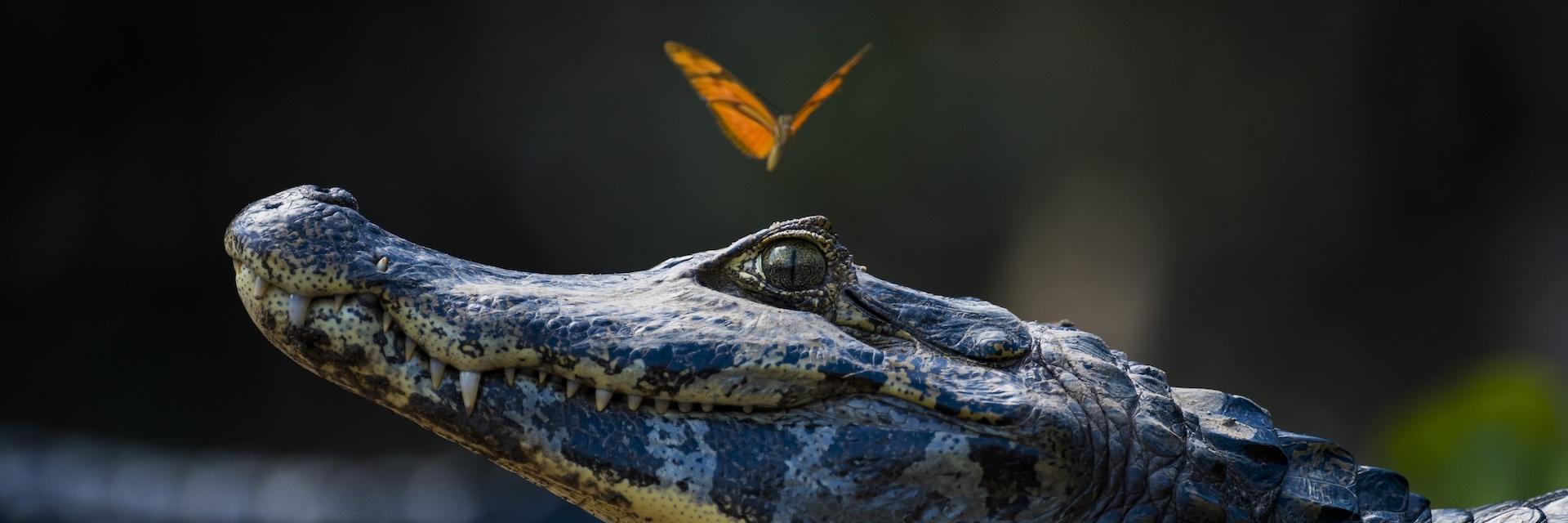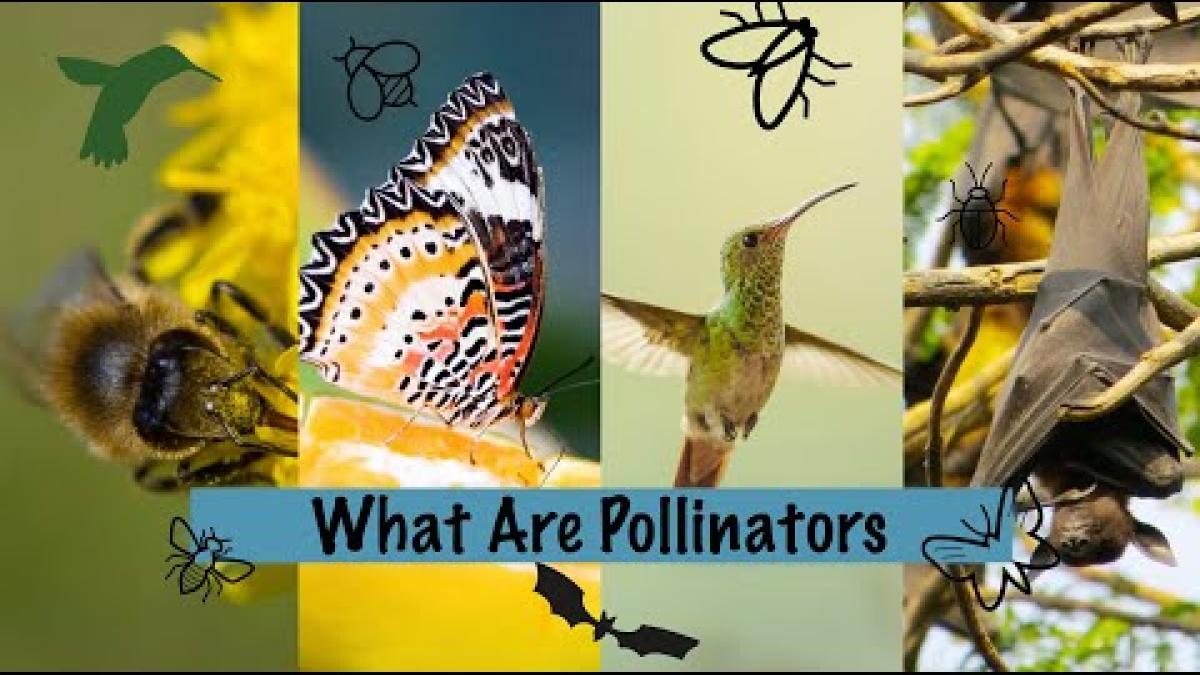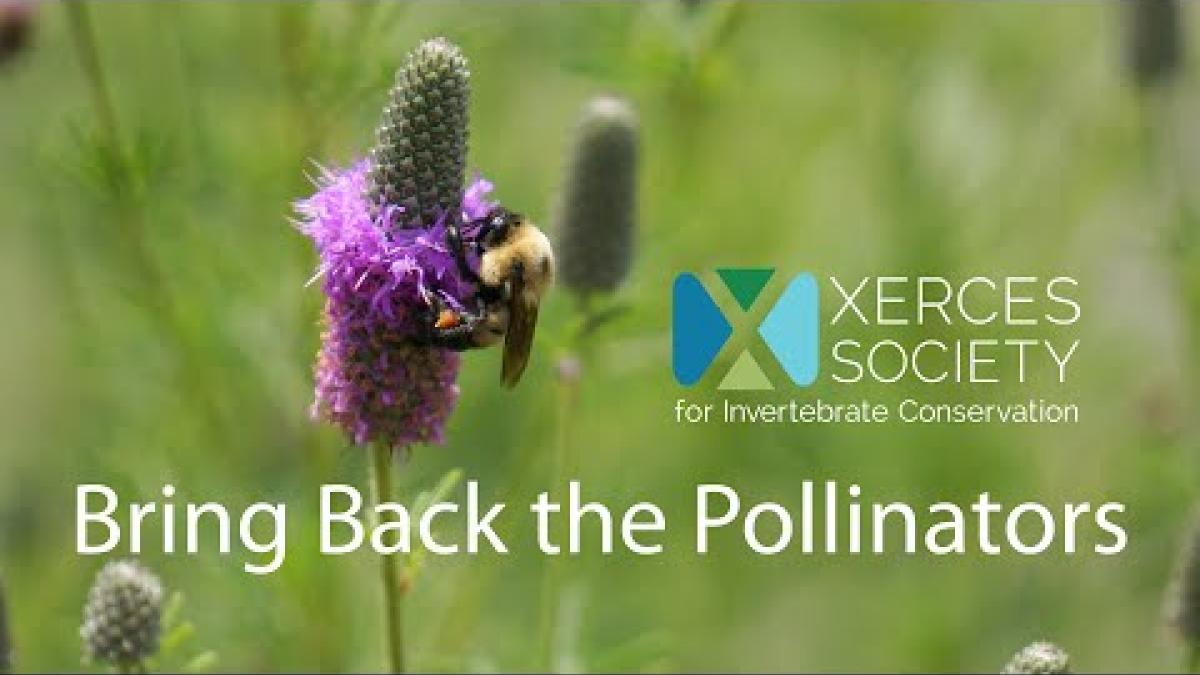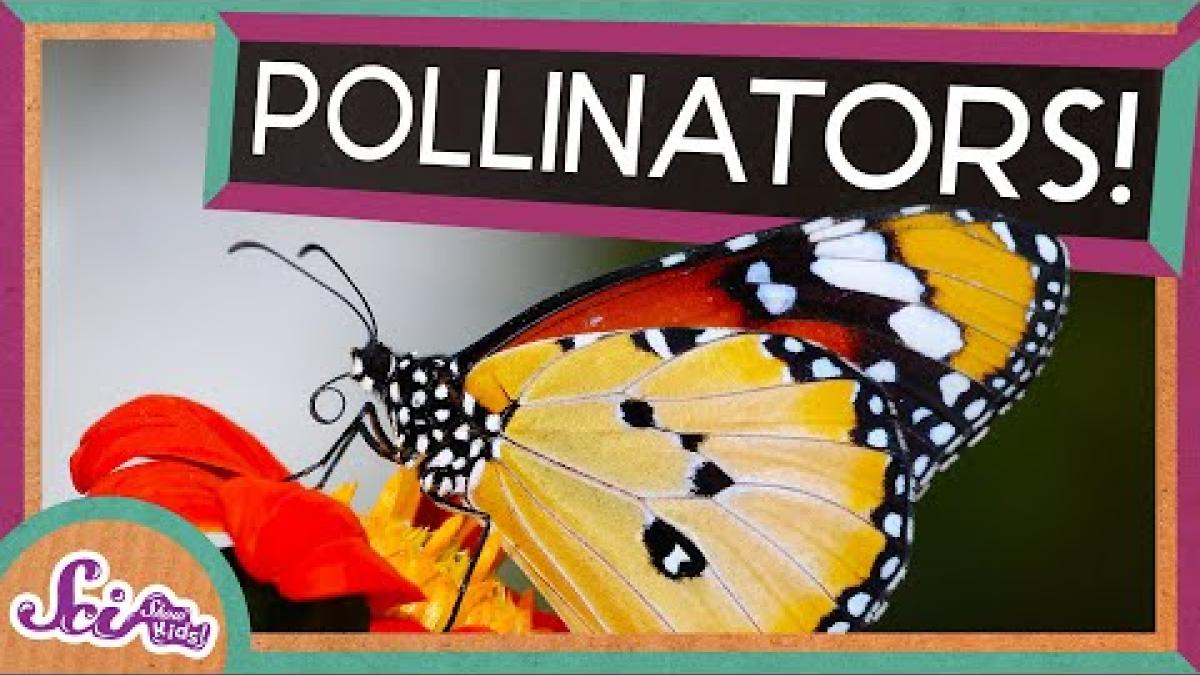
Julia heleconia (Dryas iulia) butterfly on head of Yacare caiman (Caiman yacare). Butterflies often land on caiman's head to drink the salt from its eyes. Pantanal, Brazil.
Credit: Wim van den Heever / Nature Picture LibraryPollinators
Stop the extinction of pollinators by protecting, restoring, and rewilding current and former habitats.
Pollinators are birds, bats, bees, butterflies, wasps, beetles, and other animals that travel from plant to plant transferring pollen, a process necessary for 88 percent of flowering plants, proper ecosystem functioning, and our food system. Despite their importance, over 40 percent of pollinator species are threatened with extinction. Habitat loss, pesticides, and pollution are among the main drivers of their decline. A multi-pronged strategy is needed to stop the pollinator crisis, including the adoption of regenerative land-management practices, the restoration of pollinator habitat, the protection and rewilding of native habitats, and education and advocacy campaigns. Whether it is planting native gardens with pollinators in mind, reducing pesticide use, or growing awareness and love for pollinators, there are many ways to get involved.
Action Items
Individuals
Learn why pollinators are crucial for human and ecosystem health and why they are in crisis. Pollinating animals account for nearly 350,000 species globally. They are essential for the health of ecosystems. They pollinate many food crops and support a wide variety of culturally important practices, from medicinal plants to dyes. However, many pollinators are facing high extinction rates globally. The crisis is especially acute for insects. One in four species of native bees in North America face extinction, and monarch butterflies have declined by 85 percent in the last twenty years (see Insects Nexus).
- Pollinators are key to ecosystem health. Pollinators are critical to plant health and diversity, which in turn support ecosystem functions such as sequestering and storing carbon, filtering and regulating water, air, and soil, preventing soil erosion, and controlling pests and disease vectors.
- Pollinators support the food system. Over three-quarters of the world’s food crops depend in part on pollinators, contributing to between $235 billion and $577 billion worth of global food production annually.
- Pollinators are critical for human nutrition and health. Nearly 40 percent of all medicines in Western societies originate from pollinated plants, including twenty of the most-prescribed medications in the United States.
- Pollinators are in trouble. There are multiple causes of the pollinator crisis, including habitat loss, disease, invasive species, urbanization and industrial agriculture, and climate change. A class of insecticide may be contributing to diseases such as Colony Collapse Disorder, which is one of the most significant threats to bee colonies, causing rapid, unexplained die-offs as high as 46 percent annually in some regions. Bat populations are in decline worldwide due to a variety of threats, including killing by pet cats.
Support pollinators where you live. Pollinators need food, water, and shelter. There are many ways to support pollinators in your community and beyond. For more ideas, see Insects Nexus.
- Assist pollinators by creating chemical-free areas around your home, or talk to your landlord about landscaping options.
- Create pollinator-friendly gardens in your area by establishing plants that attract pollinators. Refer to guides on plants in your region or contact your local nursery.
- Create designated areas for rewilding efforts to support pollinators. We Are the ARK outlines the steps to purposefully set aside land for pollinators in your home, schools, and public places.
- Create year-round food and water sources for birds and other pollinators. Over the winter, when food can be scarce, crabapple, winterberry, and nuts from beech, hickory, and oak trees will be greatly appreciated.
- Learn how to garden for birds to promote nesting, protection, and food. Providing a feeder or bird bath in a space can create more bird-friendly environments.
- Here is a step-by-step guide to building “bee hotels,” and guidance on birdhouses or nest boxes, and bat houses.
- Map pollinator diversity in your area using iNaturalist to count pollinators. Here is a guide to integrating your data into the Global Biotic Integration Project.
- Buy organic food, textiles, and body-care products to help pollinators. Support farms and ranches that implement regenerative practices (see Regenerative Agriculture Nexus). The Xerces Society has a certification program for pollinator-friendly food production that includes a label.
- Help students create a schoolyard habitat project that benefits pollinators and develop educational curriculums. Here is a list of tools, resources, and curriculum examples for schools.
- Participate in a local land restoration project that improves pollinator habitat, such as the Borderlands Restoration Network in southern Arizona, which has a focus on native bee habitat. For more examples, see Degraded Land Restoration Nexus.
- Most local extension services offer advice on pollinators. Use this directory of county extension offices. The Wildlife Habitat Council offers pollinator webinars focused on pollinator-friendly practices. Michigan State University offers an online course called Pollinator Champions, and Earthwatch has a pollinator webinar.
Join or support organizations protecting pollinator health. Organizations and programs include:
- The Pollinator Program of the Xerces Society works across the U.S. to protect and restore pollinator habitat as well as to conduct research.
- The UK Pollinator Monitoring Scheme (PoMS) provides information, guides, and recording forms to take part in an annual survey.
- Bat Conservation International works to end bat extinction worldwide and offers different ways to contribute to their mission.
- BirdLife International conserves birds and their habitats, emphasizing the role of birds and pollination with petitions and membership.
- eBird allows individuals to submit bird observations, which can help inform science and policy efforts.
- The Bee Conservancy has several community-based opportunities, including a citizen scientist program known as the BeeBlitz.
- The Global Rewilding Initiative teaches how to make a “rewilding stick” so you can get involved in forestation efforts.
- Join Earthwatch’s Global Pollinator Watch program.
- Join the Pollinator Partnership to take action on pollinator protection through volunteer activities or sign up for their Pollinator Listserv to send and receive messages on pollinators.
- Support the Federation of Nepal Beekeepers, which advocates for national policies that benefit both bees and beekeepers.
Use social media to support pollinators. Many organizations have group pages to interact with, campaigns to support, or social media guides to adapt to your own work:
- Join the Pollinator Partnership on Facebook and Instagram.
- Join the DuPage Monarch Project on Facebook.
- Follow and share Bat Conservation International’s media kit.
- Share event materials produced during the annual Pollinator Week.
- Follow the People and Pollinators Action Network.
- Support pollinators with Native Bee Watch’s social media toolkit.
Groups
Urban Planners, Highway, Parks and Recreation Departments
Create space for pollinators. Urban planners and parks and recreation departments can help create pollinator-friendly habitats.
- This guide from the European Commission includes tips for planners and land-use managers to create favorable urban environments for pollinators.
- Manage roadsides, verges, and rights-of-way for pollinators along highways and other public roads. Here is a roadside revegetation report from the U.S. Department of Transportation.
- Hamilton City in New Zealand posts about local bat populations on its website provides resources on protecting bat habitats, and lends free bat detectors to their community.
- Amsterdam has replaced grass with native flowering plants, stopped using chemical weed killer in public spaces, and set up bee hotels, leading to a 45 percent increase in solitary bee species recorded.
- Berlin has set aside €1.5 million to support over fifty gardens across the city.
- A study in four British cities shows that allotments (community gardens) and residential gardens supported the highest bee and hoverfly abundances.
- The metropolitan city of Campo Grande, Brazil, has created community programs to promote the appreciation and protection of macaws.
Farmers and Other Landowners
Protect pollinator habitats and build corridors. Landowners and agriculturalists are in a unique position to address habitat loss for pollinators. Implementing a range of regenerative practices not only supports pollinators but also improves soil health and crop yields.
- Reduce or eliminate pesticide use. Crop rotations and planting resistant crop varieties can reduce the need for pesticides. Avoid using harmful pesticides such as neonicotinoids and go organic to help pollinator survival and your bottom line.
- Use integrated pest-management practices. An Integrated Pest Management (IPM) approach can prevent and reduce pesticide applications by targeting the causes of pests. See this guide to learn about and adopt the many tactics and controls for managing pests.
- Diversify crops over mono-cropping practices. Regenerative farming practices can increase biodiversity. This guide on regenerative farming comes from over a hundred farmers and ranchers sharing their insights on cover crops, no-till, and more (see the Regenerative Agriculture Nexus).
- Maximize margins and corners of fields to create permanent wildflower areas. Adding flowers, leaving soil untilled where possible, and providing bee blocks are ways to farm with pollinators in mind.
- Plant hedgerows. This is one of the best ways to support pollinators and can be implemented by creating hedgerows between fields. Here is a guide for landowners from the Xerces Society.
- Support and create pollinator shelters, nesting sites, and corridors. Connect your land to nearby native habitats, woodlands, meadows, or wetlands in order to create habitat corridors. A study of solitary bees in Switzerland found that bees in wildflower strips had higher reproductive success across almost six hundred nests (see Wildlife Corridors Nexus).
- Adopt agroforestry and agroecology techniques. Integrating trees and shrubs helps support bird populations and other pollinators, as well as protect topsoil and increase crop and livestock productivity. Learn about many common practices such as alley cropping, silvopasture, and forest farming here. See more in the Agroforestry Nexus, Silvopasture Nexus, and Agroecology Nexus).
- Do less. Leaving areas to passively rewild or putting off mowing until the fall or winter when flowers necessary for pollinator food and nesting are not blooming are also great practices to support pollinator health.
- Utilize digital technology. BeeConnected is an internet-based system that brings farmers and beekeepers together, with the aim of assisting in bee health and pollination.
Companies
Ensure a pollinator-friendly supply chain. Companies can support farmers and suppliers that integrate best-management practices for pollinators and land use, source input materials with pollinator-friendly practices, or utilize end products with environmental certifications.
- KIND Healthy Snacks announced it will exclusively source its almonds from bee-friendly orchards by 2025, working with growers to eliminate certain pesticides and set aside land for pollinator health.
- The Xerces Society has a farm certification program that improves yields while protecting pollinators.
- Walmart announced that by 2025, it aims to have 100 percent of its produce and flowers sourced from suppliers utilizing integrated pest-management practices.
- CVS is one of eleven grocery retailers to address pesticide use in the name of pollinator health and commit to working with partners to audit pesticide use and practices to identify opportunities to address threats to pollinator and human health.
Invest in pollinator auditing and consulting services. Work with organizations and individuals that specialize in developing plans for habitat sites, providing insight on supply changes, or auditing facility sustainability for pollinators.
- The Xerces Society has a free Habitat Portfolio that provides insights for private sector partners to establish pollinator habitat. They also offer consulting services.
- Pollinating London Together audits green spaces for “pollinator friendliness” of plants and pesticides, and to monitor activities of pollinators.
- Several labels exist certifying sustainable and pollinator-friendly practices, including Certified Regenerative, Regenerative Organic Certified, Soil & Climate Initiative, and Bee Better Certified.
- The Smithsonian also offers a Bird Friendly mark of approval for coffee and cocoa products, requiring organic standards that ban harmful agrochemicals, and a diversity of native trees and shrubs to be available to protect bird species.
Governance
Advance legislation that supports the health and recovery of pollinators. Governments must implement policies that preserve and rewild pollinator habitat, protect vulnerable species, and reduce pesticide use. The need to protect pollinators has been integrated into several government policies and targets:
- In 2015, the White House published a National Strategy to Promote the Health of Honeybees and Other Pollinators. This spurred programs to increase habitats through highways, create educational programs required for pesticide management, and develop public-private partnerships.
- In 2016, Maryland became the first state to ban the use of neonicotinoid insecticides. Here are policy recommendations from the Xerces Society on protecting pollinators from neonicotinoids.
- Iowa incentivizes the use of native plants along county and state roads. The Convention on Biological Diversity Conference of the Parties adopted a Plan of Action 2018–2030 for the International Initiative for the Conservation and Sustainable Use of Pollinators, recommending support for Indigenous land management, harmonizing regulations for trade, and regenerating natural habitats.
- Work to restrict pesticide use for identified harmful substances to pollinators. EU legislation on plant protection has clear criteria on the use of active substances (chemicals or microorganisms used in pesticides) in regard to the effects on honeybees. Over two hundred organizations and 1.2 million European citizens are advocating for even stronger legislation to reduce pesticides.
- Here is a list of policy recommendations from the Food Institute at the University of California, Berkeley.
Support education and awareness campaigns. Governments can create national awareness campaigns and funds to promote pollinator-friendly actions.
- Australian Pollinator Week can be replicated at all scales of governance. Declare a week or day for pollinator-related events and workshops—like photo contests, educational workshops, or outdoor outings—while highlighting key organizations in your area.
- The EU Pollinators Initiative was created to address the decline of wild pollinating insects. As of 2020, over thirty actions have been implemented, including the Pollinator Park, an interactive digital tool that raises awareness about and mobilizes action around pollinators.
Key Players
Organizations
Pollinator Partnership (U.S.) works with diverse stakeholders representing various perspectives with the goal of creating positive change for pollinators.
Nepal Pollinator Network (Nepal) was created to bring together individuals, naturalists, educators, scientists, and policymakers who are passionate about pollinators in Nepal.
Indigenous Partnership for Agrobiodiversity and Food Sovereignty Unit (Italy) defends and champions Indigenous Food Systems as a means to spark joy, community health and well-being, food sovereignty, climate resilience, and peace.
UK Pollinator Monitoring Scheme (PoMS) (UK) focuses on pollinator species reporting and data.
Pollinator Pathway (U.S.) establishes pollinator-friendly habitats and food sources for bees, butterflies, hummingbirds, and other pollinating insects and wildlife along a series of continuous corridors.
Global Rewilding Initiative (Scotland) works to help the global Rewilding movement to replenish natural habitats by introducing innovative planting methods such as Reseeding and the “Rewilding Stick” to a wider public.
Earthwatch: Global Pollinator Watch (Global) equips members of the public with the training and resources they need to collect data that will help us to better understand pollinator presence and abundance in regions around the world.
The Xerces Society for Invertebrate Conservation (U.S.) is an international nonprofit organization that protects the natural world through the conservation of invertebrates and their habitats.
Bat Conservation International (U.S.) conserves the world’s bats and their ecosystems to ensure a healthy planet.
BirdLife International (Global) has a network of over 2 million birders, scientists, and local volunteers that helps us to track, follow, analyze, conserve, and understand every bird species in the world.
Wildlife Habitat Council (U.S.) empowers companies to advance biodiversity, sustainability, employee engagement, and community relations goals.
We Are the ARK (U.S.) works to create safe and abundant havens for as many wild creatures as possible.
Rewilding Academy (Global) empowers #generationrestoration through capacity development in rewilding and restoring ecosystems.
Kuxtalil Co-operative Network Ladies of Honey/Queens of Their Hives (Mexico) promotes beekeeping and meliponiculture with a comprehensive approach that includes promoting biodiversity conservation in the landscape that provides nectar and pollen: the Mayan forest.
Pollinating London Together (U.K.) protects our precious pollinators and fosters a greener, more sustainable London for future generations.
Wildlife Preservation Canada (WPC) (Canada) provides direct, hands-on care for reptiles, amphibians, birds, insects and mammals on the brink of extinction.
Individuals
Binita Pandey is the founder and executive president of Nepal Pollinator Network.
Gary Nabhan is an ethnobotanist, author, and aquaculture ecologist.
Roque Arroyo Rodríguez is a Pollinator Advocate for Mexico, developing local stingless beekeeping cooperatives.
Sarah Bergmann is the founder of Pollinator Pathway.
Vicki Wojcik is the director of Pollinator Partnership Canada.
Leydy Pech is an Indigenous Mayan beekeeper and member of the Ladies of Honey.
Scott Black is a conservationist and executive director of Xerces Society.
Gemma Cranston is the director of the Business and Nature team working on safeguarding pollinators.
Learn
Watch
The Pollinators Documentary Film (92 mins.)
The Power of Pollinators by Nature on PBS (6 mins.)
People, Plants, and Pollinators by National Geographic (21 mins.)
11 MUST Grow Pollinator Garden Plants by Epic Gardening (10 mins.)
More Than Honey Documentary, Directed by Markus Imhooh (95 mins.)
Power for Pollinators by Tree Media (19 mins.)
Tube-Lipped Nectar Bat: Untamed Americas by National Geographic (3 mins.)
Pollination Life of Birds Webinar by Audubon Arkansas (54 mins.)
Unusual Pollinators by Brilliant Botany (3 mins.)
Into the Garden: Bats as Pollinators by UF Thompson Earth Systems Institute TESI (38 mins.)
The Truth About Bats (Full Documentary) by Lightfoot Film (13 mins.)
How to Bring Biodiversity Back to American Prairies by NowThisEarth (5 mins.)
Read
We Are the ARK: Returning Our Gardens to Their True Nature Through Acts of Restorative Kindness by Mary Reynolds / Timber Press
Planting for Wildlife: A Grower’s Guide to Rewilding Your Garden by Jane Moore / Quadrille
The Pollinator Victory Garden: Win the War on Pollinator Decline with Ecological Gardening by Kim Eierman / Quarry Books
Pollinator-Friendly Gardening: Gardening for Bees, Butterflies, and Other Pollinators by Rhonda Fleming Hayes / Voyageur Press
Pollinators in Peril: A Systematic Status Review of North American and Hawaiian Native Bees by Kelsey Kopec and Lori Ann Burd / Center for Biological Diversity
Pollination: The Enduring Relationship between Plant and Pollinator by Timothy Walker / Princeton University Press
Pollinators and Pollination: Nature and Society by Jeff Ollerton / Pelagic Publishing
The Forgotten Pollinators by Stephen L. Buchmann / Island Press
The Secret Lives of Bats: My Adventures with the World's Most Misunderstood Mammals by Merlin Tuttle / Mariner Books
Listen
Protecting Pollinators: How to Save the Creatures That Feed Our World (Audiobook) by Jodi Helmer (6 hrs. 15 mins.)
Share this page






